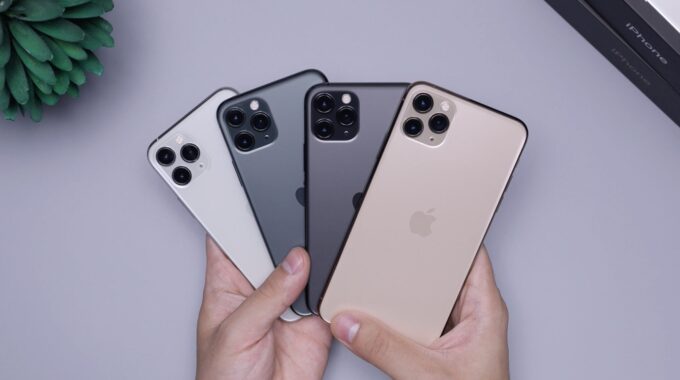Navigating the eSIM Landscape in New Zealand: A Guide for Consumers

In the heart of New Zealand’s rapidly advancing telecommunications sector, the emergence of eSIM technology stands as a testament to the nation’s embrace of innovation and digital evolution. As traditional physical SIM cards gradually make way for their embedded counterparts, consumers across the country are witnessing a paradigm shift in how mobile connectivity is managed and experienced. With leading mobile network providers like Spark, 2degrees, and One NZ stepping into the forefront of this technological revolution, the landscape of mobile communication in New Zealand is being reshaped. This transition to eSIM technology not only heralds a new era of convenience and flexibility for users, allowing for seamless provider switching and the support of multiple phone numbers on a single device, but also underscores New Zealand’s position as a frontrunner in adopting cutting-edge technologies. As we delve deeper into the benefits, challenges, and opportunities presented by eSIM technology, it becomes clear that this is more than just a technological advancement; it’s a leap towards a more connected and efficient future.
Understanding eSIM Technology
Embedded SIM (eSIM) technology represents a significant leap forward in telecommunications, offering a digital alternative to traditional physical SIM cards. Unlike its predecessor, an eSIM is built directly into a device, enabling users to switch operators and plans without the need to physically replace a SIM card. This embedded solution paves the way for more streamlined device design and improved user experiences, offering capabilities such as holding multiple profiles and simplifying international roaming.
The Appeal of eSIM
There are several compelling reasons why consumers might opt for eSIM technology. First and foremost, it introduces unparalleled flexibility in managing mobile services. Users can easily switch between network providers or data plans directly from their device’s settings, bypassing the need for physical SIM swaps. For international travellers, eSIMs remove the hassle of purchasing local SIM cards, allowing for pre-travel plan adjustments that activate upon landing. Additionally, devices capable of supporting eSIM technology can house multiple numbers, seamlessly transitioning between personal and business lines or local and international plans.
Potential Drawbacks
Despite its advantages, eSIM technology might not be the perfect fit for everyone. The requirement for devices to be eSIM compatible could necessitate upgrading from older models, incurring additional costs. Moreover, the ability to switch providers with ease could lead to complications for less tech-savvy users, potentially leaving them vulnerable to service interruptions if not managed correctly. Furthermore, not all network providers offer eSIM services, which could limit the options available to consumers.
How eSIM Works
The operational framework of eSIM technology is fundamentally different from traditional SIM cards. Upon deciding to switch carriers or plans, users can initiate the process directly on their device. This typically involves scanning a QR code provided by the new carrier, which then securely downloads the necessary profile to the eSIM. This digital SIM can store multiple profiles simultaneously, although only one can be active at a time, with the exception of some devices that allow dual active profiles.
eSIM Providers in New Zealand
In New Zealand, the adoption of eSIM technology is spearheaded by major telecom operators, including Spark, 2degrees, and One NZ. Spark leads the pack, having introduced eSIM support for personal and corporate customers and extending it to wearable technology. 2degrees offers eSIM capabilities for select mobile devices, focusing on simplifying the user experience. One NZ, the rebranded Vodafone NZ, has also embraced eSIM technology, expanding its services to include phones and laptops with plans to support smartwatches in the future.
Devices That Support eSIM
The availability of eSIM technology is increasingly common in newer device models. Major manufacturers like Apple, Samsung, Google, and Huawei have integrated eSIM into their flagship products. For example, all Apple iPhones from the XR model onwards are eSIM compatible. Similarly, Samsung’s Galaxy S20 series and later models, including the Z Fold and Z Flip, support eSIM. Google’s Pixel 2 and subsequent models offer eSIM functionality as well. On the wearable front, Apple Watch Series 3 and later models, along with certain Samsung Galaxy Watch models, are equipped with eSIM technology.
Embracing the Future with eSIM: Your Guide to Seamless Connectivity
As we navigate the dynamic landscape of mobile technology, embracing innovations like eSIM presents a unique opportunity to streamline our digital lives. At Phone Repair NZ, we’re committed to ensuring you stay at the forefront of these advancements, offering expert guidance and support every step of the way. Transitioning to eSIM with us is not just about enjoying the cutting-edge technology; it’s about ensuring your connectivity is as seamless and hassle-free as possible. For any queries or assistance with eSIM technology—or to explore a wide range of high-quality accessories that complement your digital experience—our team is ready to assist. Dive into the future with confidence and let Phone Repair NZ be your partner in harnessing the power of eSIM technology. Experience the convenience, flexibility, and unparalleled service that only we can provide.





